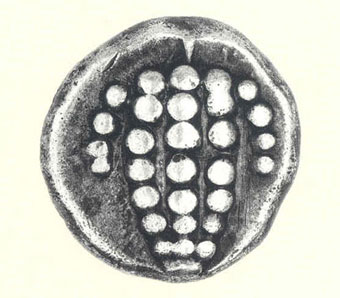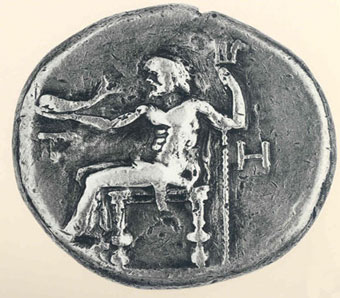Greek Islands Ancient Coins
"Tinos Coin-Silver Tetradrachm"
Tinos lies directly to the south of Andros, and developed its own political personality from the early 7th c. BC onwards. Two important sanctuaries have been excavated on the island, one of Demeter, dating from the 7th c. BC, which lies at some height in the interior of the island on Tripotamos village, and one of Poseidon and Amphitrite near the sea to the west of the modern town. This imposing sanctuary dates from the Hellenistic period and was a famous cult centre.
Little is known of the history of the island. It was captured by Alexander of Pherai in 362 BC, who sold its inhabitants into slavery. Tinos was later one of the meeting places of the Island League. In Roman times, Antony gave Tinos and Naxos to the Rhodians.
The Archaic mint of Tinos is known only from the hemidrachms with a depiction of a grape. These issues continued for a short period, with the aim of facilitating private transactions. In the 4th c. BC the mint struck silver tetradrachms on the Attic standard and drachms on the Rhodian standard. The numismatic types are predominantly associated with the patron god of the island, Poseidon.
A characteristic example of the Tinian seal-engraver's art is provided by the Hellenistic tetradrachm depicting the head of Zeus Ammon wearing a laurel wreath on the obverse. On the reverse is engraved the enthroned figure of Poseidon holding his symbols, the trident and dolphin. The inscription ?? or ????O? indicates the ethnikon name of the island.







